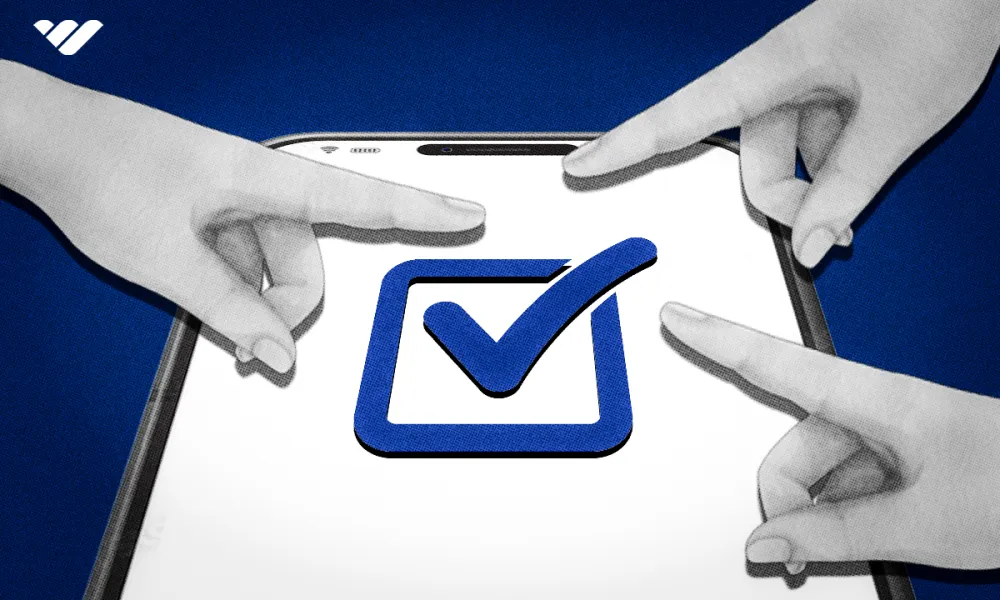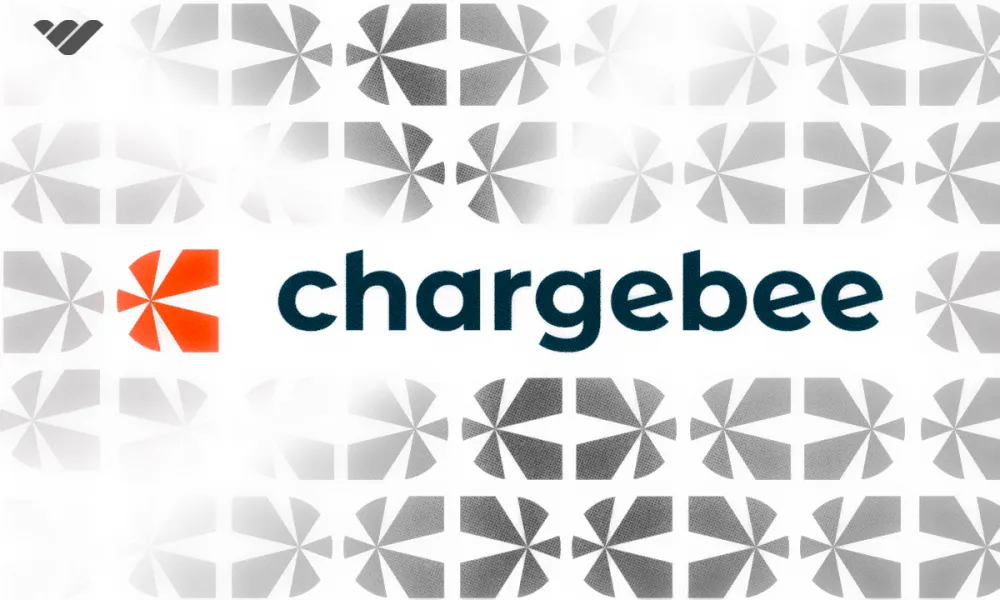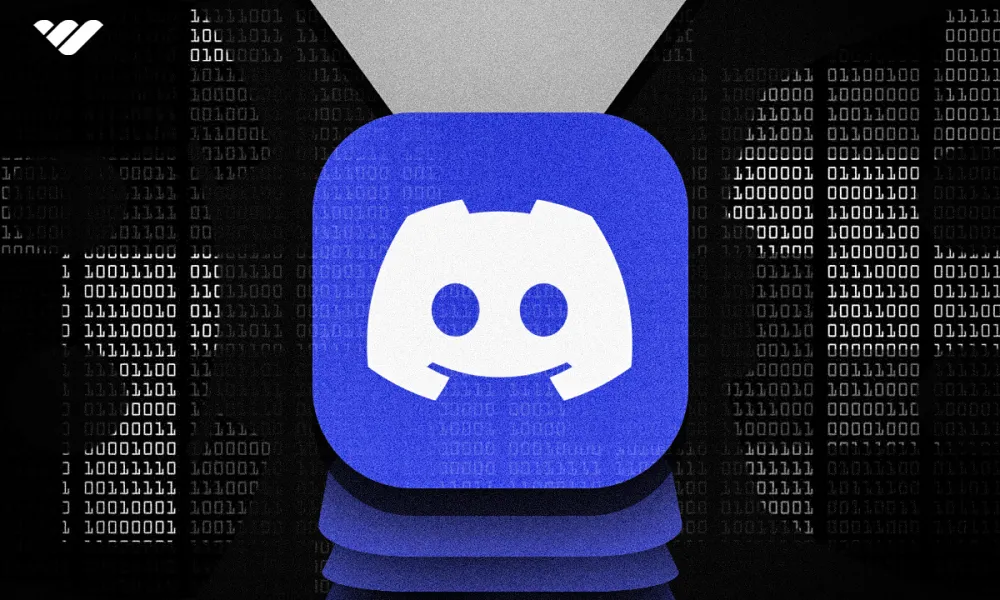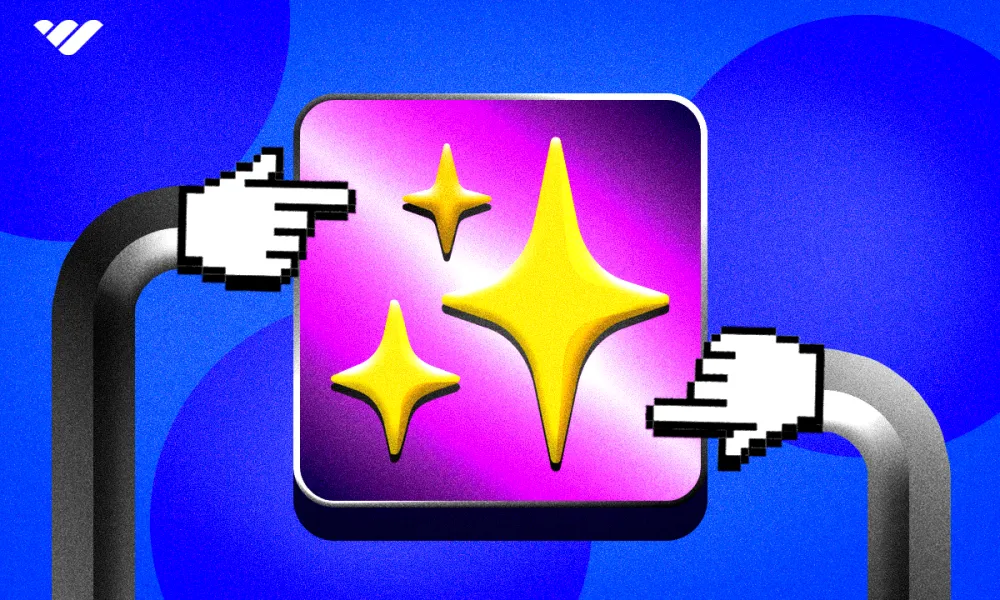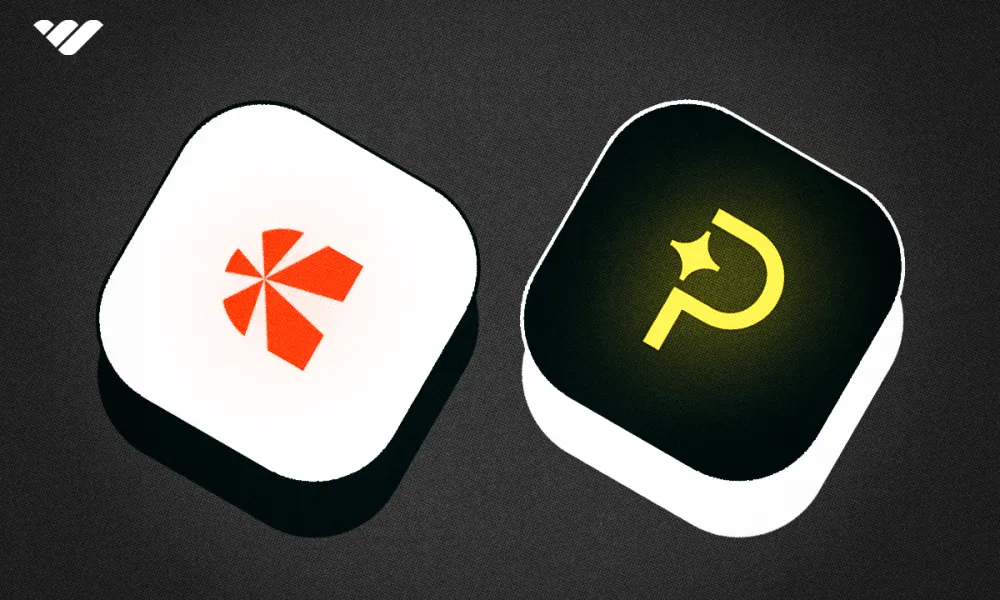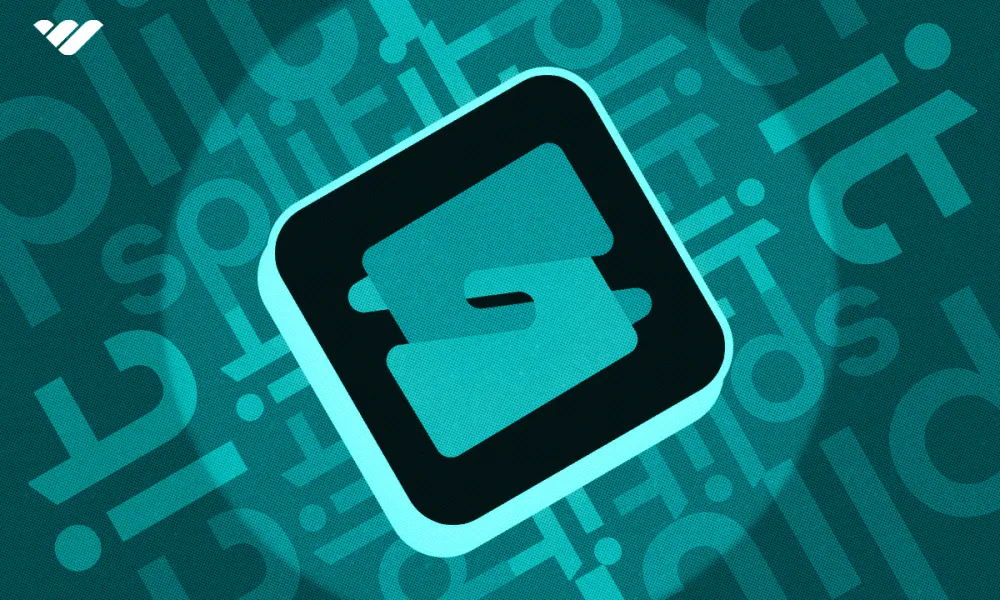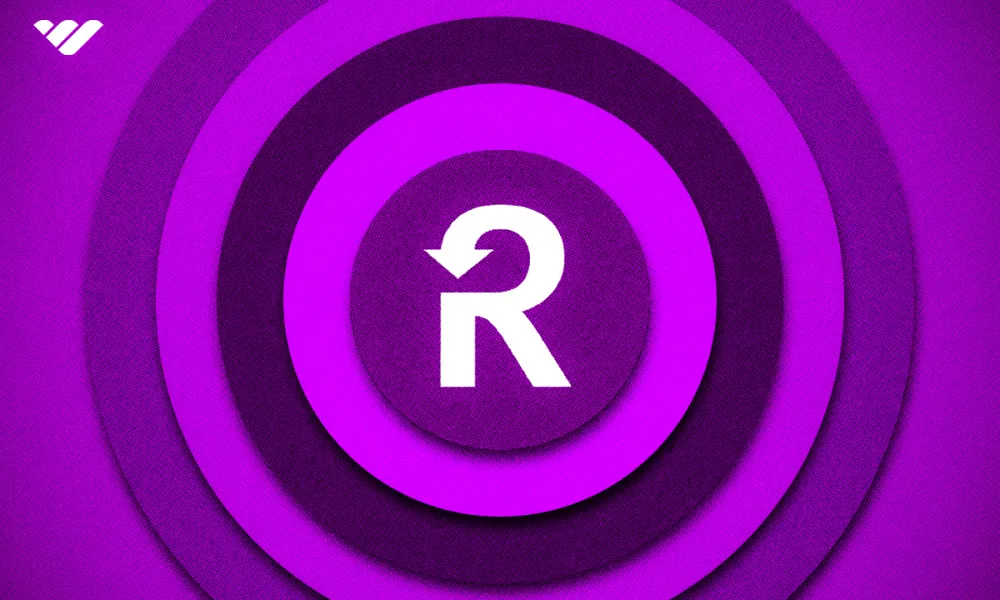Discover over 100 ChatGPT statistics covering users, adoption, performance, and more to guide your AI efforts in 2025.
Launched by OpenAI in November 2022, ChatGPT was the first generative AI tool to achieve mainstream adoption. Three years on, with over 300 million weekly active users, it continues to disrupt industries and push the boundaries of how we interact with AI.
If you're looking to harness the power of generative AI, understanding ChatGPT’s evolution and impact is essential. That’s why we've gathered insights from top industry sources to bring you over 100 ChatGPT statistics for 2025.
Read on as we answer key questions about ChatGPT’s popularity, user base, performance, and more.
| ChatGPT Highlights | |
|---|---|
| Official Launch | November 2022 |
| Created By | OpenAI (founded in 2015) |
| Weekly Active users (as of Jan.2025) | 300 million |
| Estimated Revenue (as of Dec.2024) | $3.7 billion |
ChatGPT is an advanced AI chatbot capable of answering questions in a conversational way.
The GPT in ChatGPT stands for ‘generative pre-trained transformer’, a large language model (LLM) designed to understand language and generate human-like responses.

As of February 2025, ChatGPT was powered by large language learning models (LLMs), such as:
OpenAI o3 series
Reasoning-focused models designed for advanced problem-solving, logical reasoning, and greater energy efficiency. They showed a 12.5x leap in math skills, 3x higher reasoning, and 1.46x coding capabilities compared to the o1-series1.
- OpenAI o3 mini: A smaller, more efficient version of the o3 model designed to handle complex tasks in fields like science, maths, and coding.
OpenAI o1 series
New models trained with reinforcement learning to perform complex reasoning or think before responding. They had 50% faster processing time and 34% fewer major mistakes than the o1 preview version2.
- OpenAI o1: Designed to reason about complex problems using broad general knowledge about the world.
- OpenAI o1-mini: A faster, more affordable version of o1 that excels at coding, math, and science tasks.
GPT-4o (“o” for “omni”) series
An advanced model with the ability to process audio, vision, and text in real time.
- GPT-4o: An intelligent model with a 128k context length, advanced tools (data analysis, file uploads, browse, GPTs, and vision) text and image input/output, and audio input/output.
- GPT-4o mini: A lightweight version of 4o minus the advanced tools.
ChatGPT timeline and updates
We run through ChatGPT’s key updates and milestones below:
2022:
- ChatGPT, powered by GPT-3.5, was released for public use in November3.
- By December, ChatGPT had over 1 million users.
2023:
- In March, OpenAI launched GPT-4 and brought it to ChatGPT Plus, a subscription plan for $20 per month.
- ChatGPT’s iOS mobile app was launched in May, with the Android app following in July.
- OpenAI launched ChatGPT Enterprise, its business tier, in August.
- In October, internet browsing went live on ChatGPT, extending its knowledge beyond GPT-4’s 2021 cut-off4.
- November ushered in the launch of GPT-4 Turbo, APIs, custom GPTs, and the GPT store.
2024:
- In May, GPT-4o, with reasoning across audio, vision, and text, was released.
- OpenAI launched GPT-4o mini, a cheaper and faster version of GPT 4o mini in July. The company also released SearchGPT, replacing it with ChatGPT search in October.
- In December, OpenAI launched its o1 models and announced the new o3 models. ChatGPT Pro, priced at $200 per month, was also made available to advanced users5.
2025:
- In January, OpenAI launched ChatGPT for US government agencies, while the o3-mini model was rolled out for free and paid ChatGPT users. Operator mode, ChatGPT’s first AI agent was also released to Pro users in the US as a research preview.
ChatGPT market statistics
While unconfirmed by OpenAI, ChatGPT-4o is believed to have over 1.8 trillion parameters, comparable to ChatGPT-4 with an estimated 1.76 trillion parameters6.
Parameters are what allow an AI model to interpret information and determine how to respond.
Compared with previous GPT models, GPT-4 is over:
- 10x larger than GPT-3, which has a confirmed 175 billion parameters.
- 1200x larger than GPT-2, which has 1.5 billion parameters.
- 15,000x larger than GPT-1, which has 117 million parameters.
GPT-4o mini, a more cost-efficient model, has 8 billion parameters.
This places it on par with other 2024 models like Llama 3 8b, Claude Haiku, and Gemini 1.5 Flash.

By Q3 2024, language model context windows, which allow models like ChatGPT to work with more data at once, had increased significantly, making 128k the new norm7.
This represented a 32x increase from Q3 2023.
In 2024, the demand for AI models was driven by top AI labs, with OpenAI’s ChatGPT leading the market at 83%.
Meta was next in line (49%), followed by Anthropic (46%), Mistral (37%) and Google (31%).
ChatGPT had a growth rate of 634% in 2024, despite being the most-blocked AI application by businesses8.
ChatGPT was the most widely used AI app by transaction volume and had a 52% share of the enterprise AI market.
ChatGPT was the top AI app used in industries such as:
- Manufacturing - 21%
- Finance - 14%
- Technology - 11%
- Retail & wholesale - 5%
- Healthcare - 4.3%
In January 2025, ChatGPT had a 59.5% share of the Gen AI chatbot market, down from around 76% in January 20249.
In second place was Microsoft Copilot with a 14.3% share. This was followed by:
- Google Gemini - 13.4%
- Perplexity - 6%
- Claude AI - 3%

As of December 2024, ChatGPT was the most popular AI language app globally, with downloads hitting 90 million downloads in Q310.
This was a 100% increase from 2023 and over 53% of the global AI mobile download market.
The apps download market share in the US also increased by 3%, bringing the total to 45%.
In the UK, ChatGPT’s download share increased from 43% to 47%. Meanwhile, in Brazil and India, download market share dropped by 10% and 35%, respectively.
Between June and August 2024, ChatGPT ranked among the top ten most downloaded apps of the quarter11.
While Google Gemini made the top 3, ChatGPT proved its staying power at #10.
ChatGPT traffic statistics
Between October and December 2024, total visits to ChatGPT exceeded 11 billion12.
In December, ChatGPT saw over 3.7 billion visits, down 101 million or 3% from 3.8 billion in November.
As of October 2024, ChatGPT had 25x more unique monthly visitors than Microsoft Copilot, Perplexity, and Claude.
It also had 5x more unique monthly visitors than Gemini.
Desktop traffic accounted for 69% of all visits to ChatGPT in 2024.
Meanwhile, mobile visits accounted for 30% of ChatGPT’s traffic.
ChatGPT also had a bounce rate of 38%.
Users visited an average of 3 pages and spent 6 minutes on the app.

At 14.2%, the US sent the most traffic to ChatGPT between October and December 2024.
This represented a 3% drop from the previous quarter.
At 9.7%, India sent the second most traffic to ChatGPT.
Next was Brazil at 4.6%, followed by the UK (3.9%) and Indonesia (3.9%).
Over the same period, ChatGPT’s top referring website was OpenAI at 97%.
This was followed by MSN and Google at less than 1% each.
Between October and December 2024. The marketing channel accounting for most of ChatGPT’s traffic was direct at 72.85%.
This was followed by organic search (20.86%), referrals (4.12%), and social media (1.93%).
For social referrals, YouTube took the lead at 61%.
This was followed by WhatsApp (10.2%) and Facebook (9%).
With a traffic share of 93.36%, ChatGPT’s top referring industry was Computers Electronics, and Tech.
The Web Hosting and Domain name category referred 3% of ChatGPT’s traffic, while Programming and Developer Software referred 1.74%.
ChatGPT performance statistics
As per Artificial Analysis’ 2025 Quality Index, which tests:
- Reasoning and Knowledge (MMLU)
- Scientific Reasoning and Knowledge (GPQA Diamond)
- Quantitative Reasoning (MATH-500) and Coding (HumanEval)
OpenAI’s o1-preview took the top spot with a score of 8613.
The o1-mini version had a score of 84, surpassing competitors such as Google’s Gemini. 2.0 Flash with a score of 82 and Anthropic’s Claude 3.5 Sonnet with a score of 80.
Meanwhile, ChatGPT versions such as GPT-4o and GPT-4o mini also ranked highly on the index, scoring 73 each. This outpaced models such as Claude 3.5 Haiku (68) and Meta’s Llama 3.3 70B (68).

For Multi-task Language Understanding (MMLU) testing, which looks at reasoning and knowledge across STEM, the humanities, social sciences, and more, GPT-4o had an accuracy rate of 88.7%14 as of January 2025.
This placed GPT-4o ahead of other models and on par with Claude 3.5 Sonnet, which had the same accuracy score. Version 4o represented a step above GPT-3 which scored 60% in the very first MMLU test.
In the Graduate-Level Google-Proof Q&A (GPQA Diamond) test, which looks at advanced scientific reasoning and knowledge across fields like biology, physics, and chemistry, OpenAI’s o1 preview led the charge with a 67% accuracy rate.
Gemini 2.0 Flash (exp) was next at 59%, followed by o1-mini at 58% and Claude 3.5 Sonnet at 58%. Meanwhile, other GPT versions which made the list included GPT-4o mini (44%) and GPT-4o (39%).

For MATH-500, a test to evaluate mathematical reasoning and problem-solving, o1-mini had an accuracy score of 95%, putting it in first place, while o1-preview came in second at 92%.
Both Gemini models (2.0 Flash exp) and (1.5 Pro) occupied the third and fourth spots with scores of 90% and 88% respectively. Meanwhile, GPT-4o mini ranked sixth at 79% and GPT-4o ranked eleventh with an accuracy rate of 74%.
For the HumanEval Benchmark, which evaluates the performance of LLMs in code generation tasks, o1-mini and o1-preview took the top spots with accuracy scores of 97% and 96%, respectively.
In fourth place, behind Claude 3.5 Sonnet (96%) was GPT-4o with a score of 93%, followed by GPT-4o mini in eighth position at 88%. This was behind DeepSeek V3 (92%), Gemini 2.0 Flash exp (91%), and Mistral Large 2 (90%).

ChatGPT’s performance across a range of languages, tested through Artificial Analysis’ own Multilingual Index, ranked o1-preview second with a score of 86%, just behind Claude 3.5 Sonnet (88%).
GPT-4o had a score of 84%, putting it in fifth place, while o1-mini and GPT 4o-mini scored 83% and 80% respectively. This was behind key competitors like Llama 3.3 70B (84%) and Gemini 2.0 Flash (exp) at 84%.
As of January 2025, OpenAI o1-mini had the fastest output speed of 211 tokens per second.
Other notable versions included:
- OpenAI o1 preview - 144 tokens per second.
- GPT-4o - 111 tokens per second.
- GPT-4o mini -105 tokens per second.
GPT-4o and GPT 4o-mini were ahead of key competitors such as Llama 3.1 70B (73 tokens per second) Claude 3.5 Sonnet (72 tokens per second) and Gemini 1.5 Pro (61 tokens per second).

A research study conducted in December 2024 found that the models powering ChatGPT had some of the lowest hallucination rates:
- OpenAI o1-mini - 1.4%
- GPT-4o -1.5%
- GPT-4o-mini -1.7%
- GPT-4-Turbo - 1.7%
- GPT-4 -1.8%
- GPT-3.5- Turbo -1.9%
According to HaluEval, a benchmark used to test hallucinations in LLMs, ChatGPT-4 produced inaccurate, nonsensical, or unverifiable answers in 19.5% of its responses15.
Earlier studies pegged ChatGPT-4’s hallucination rate at 28.6%.
In another study, GPT-4 Turbo scored slightly lower with a hallucination rate of 18.64%16.
Meanwhile, GPT-3.5 Turbo had a 35.47% hallucination rate — a slight improvement over GPT-3.5’s hallucination rate of 39.6%.
As per the TruthfulQA benchmark, used to evaluate the truthfulness of LLMs, GPT-4 achieved a score of 0.6.
This was 3x higher than a GPT-2 based model tested in 2021, suggesting ChatGPT’s ability to provide truthful answers has improved
ChatGPT cost statistics
AI model training costs could exceed $10 billion in 202517.
By 2029, OpenAI expects to charge $44 per month for ChatGPT Plus.
The cost of training frontier AI models has grown by a factor of 2x to 3x per year over the last 8 years.
Estimates suggested the largest models would likely cost over $1 billion by 2027, with:
- Hardware costs ranging between 47% to 67%.
- R&D staff costs ranging between 29% to 49%.
- Energy Consumption costs ranging between 2% to 6%.
In 2023, OpenAI spent around $119 million (including staff costs) training GPT-418.
The cost breakdown was:
- AI accelerator chips - 32%
- R&D staff (including equity) - 29%
- Other server components - 21%
- Cluster-level interconnect - 12%
- Energy - 3%

Language model inference pricing fell significantly in 2024 for all levels of intelligence.
By the end of 2024, GPT-4 mini approached GPT-4 intelligence at a 100x cheaper price. Across ChatGPT’s model family, costs per million tokens (blended input and output at a 3:1 ratio) fell with each iteration:
- GPT-4 at $37.50
- GPT-4-Turbo at $15
- GPT-4o at $7.50
- GPT-4o at $4.40
- GPT-4o-mini at $0.30
OpenAI reportedly spent $700,000 per day on ChatGPT and its infrastructure in 2023.
Cost projections for 2024 were close to $7 billion. Meanwhile, the company’s unreleased GPT-5 model reportedly cost $500 million per six-month training cycle.

OpenAI spent over $6.5 million training GPT-3 in 2020.
The cost breakdown was:
- AI accelerator chips - 31%
- R&D staff (including equity) - 33%
- Other server components - 21%
- Cluster-level interconnect - 12%
- Energy - 3%
GPT-3 emitted 502 tonnes of carbon emissions19.
This was the most of any other model, with the exception of Gopher (2021) which emitted 352 tonnes of emissions.
In 2023, the average energy consumption of a ChatGPT request was around 2.9 watt-hours20.
This was 10x that of a regular Google search which consumed about 0.3 watt-hours per request.
ChatGPT revenue statistics
In 2025, OpenAI is expected to generate $12 billion in annualized revenue or $1 million per month from ChatGPT21.
That’s a 224% increase from $3.7 billion in 2024.
Additionally:
- Between 2023 and 2024, ChatGPT’s revenue increased by 131% from $1.6 billion.
- In August 2024 alone, the AI startup made $300 million, a whopping 1,700% increase from the beginning of 2023.
Despite increasing revenue from ChatGPT, OpenAI suffered losses of roughly $5 billion.
The costs were tied to the high costs of running ChatGPT and its other services.

ChatGPT held a 62% revenue share of the global AI mobile market in Q3 202422.
This was a 10% increase from Q2 2024.
ChatGPT’s US mobile revenue increased by 9x year-over-year in Q3 2024.
This accounted for 60% of the market and was a significant increase from 19% in 2023.
Other top-grossing apps like ChatOn, Chat&Ask AI, and ChatBox accounted for 25% of the US market during the same period.
Between June and August 2024, ChatGPT ranked third for the most significant quarterly revenue growth.
Estimates placed this growth at an impressive rate of more than 60% over the period.
ChatGPT users spent $486 million on the app in 2024, with 43% of those purchases being made in Q4 202423.
For the same year, ChatGPT app revenue increased by 1,033%.
ChatGPT awareness statistics
According to a 2024 report by BCG, an average of 80% of global consumers were aware of ChatGPT24.
Awareness levels were as high as 93% in India, 91% in UAE, and 88% in South Korea. In the US, UK, and Australia, awareness rates were slightly lower at 75%, 72%, and 75%, respectively.
Mid-2023, global public awareness of ChatGPT was 63%.
Awareness rates were highest in India (82%), Kenya (81%) and Indonesia (76%). Poland (43%) and Italy (52%) had the lowest awareness rates.
At the beginning of 2023, 57% of consumers in 11 markets had never heard of ChatGPT. By September 2023, this had fallen to 34%25.
There was also a 21% increase in consumers who felt they could use ChatGPT consistently.

Interest in ChatGPT on Google Search hit a peak of 100 index points in June 202426.
Between October 2022 and March 2023, traffic volume for the keyword ChatGPT grew over 600% from 184,000 to 1.3 million searches27.
Over the same period, traffic volume for the keywords ChatGPT plugin increased by over 5,142% from 3,300 to 173,000 searches28.
In Q4 2023, GPT-4 had a net sentiment score of 44, down from 51 in Q3 2023, and 48 in Q2 2023.
Meanwhile, in Q4 2023, GPT-4 Turbo had a net sentiment score of 68. This placed ChatGPT ahead of Google Gemini (36) but behind Copilot (67) and Anthropic’s Claude 2.1 (87).
Although new AI models were released in 2023, ChatGPT remained a key topic of consumer conversation with an average social media attention share of 58%.
Breaking it down per quarter, ChatGPT’s share of social media attention was:
- 53% in Q1
- 71% in Q2
- 62% in Q3
- 45% in Q4, ahead of models like Grok (16%), Gemini (11%), and Claude 2.1(2%).

31% of consumers used ChatGPT in 2024, up from 26% in 2023 and 21% in 202229.
Other leading players included:
- Meta AI - 31% in 2024, up from 16% in 2023.
- Google Gemini - 27% in 2024, up 13% from 2023.
- Microsoft Bing AI - 12% in both 2024 and 2023.
AI tools like Jasper (13% in 2022 vs 5% in 2023) and DALL-E (10% in 2022 vs 6% in 2023) saw a notable drop in usage rates.
Another study found that usage rates were much higher at 75%.
Usage rates were highest in India (45%), Morocco (38%) and the UAE (34%). Consumers in these countries were the most excited about AI and used ChatGPT to find information, conduct research, and assist with various tasks.
Contrastingly, US users (23%), UK (22%), Australia (22%), and Germany (18%), mostly wanted to experiment.
A 2024 report found that 32% of consumers used ChatGPT for learning and research30.
Around 30% of consumers also used it for content creation and creative writing. Close to 20% of consumers used it for language translation and personalized product recommendations.
The same report found that most consumers who used ChatGPT for personalized product recommendations, (58%) did so for entertainment products.
This was followed by groceries (54%) and apparel (41%).

The report also identified four user types based on usage. At 38% ‘broad use’ users were the most engaged.
Productivity users followed at 25%, creative users at 21%, and educational users at 15%.
Digging deeper, creative users used ChatGPT the most weekly at 47%.
This was followed by educational users with a 45% usage rate. Broad users (42%) and productivity users (36%) used ChatGPT the least amount of time weekly.

35% of consumers in the US admitted they used ChatGPT instead of a search engine to answer a question31.
35% also used it to explain something while 23% used ChatGPT to write, rewrite, and edit their writing,
When asked about their reasons for trying ChatGPT, 37% believed it would be fun.
36% said it would save time while 35% believed it would make a task easier or less stressful. A smaller percentage (32%) tried ChatGPT because they liked to use new technology.
20% of consumers used ChatGPT to find information online.
For Gen Z consumers, this went up to 54%.
ChatGPT user statistics
As of January 2025, ChatGPT had 300 million weekly active users across 150 countries.
This was a 50% increase from 200 million weekly active users in August 2024 and a 200% from over 100 million weekly users in November 2023.
ChatGPT had over 10 million paying users in December 2024.
Additionally, in September 2024, ChatGPT surpassed 1 million paying users across its business products, ChatGPT Enterprise, Team, and Edu, up 67% from 600,000 users in April32.
ChatGPT’s monthly active users (MAU) increased by 500% or 160 million in Q3 2024, the largest increase over the period.
ChatGPT broke records, hitting 50 million global MAU in 5 months. In comparison, apps like Disney+ and Temu, took 12 and 8 months, respectively to reach the same milestone.

ChatGPT’s estimated quarterly user growth was 8% in January 2025.
This placed ChatGPT’s growth rate in fourth place behind Claude (15%), Perplexity(12%), and Phind (12%).
As of January 2025, ChatGPT had a larger share of male users at 55%.
The app’s share of female users was 45%.
The majority of ChatGPT users (31%) fell within the 25-35 age group.
Breaking down the rest of the users according to age:
- 25% were aged 18-24.
- 19% were aged 35-44.
- 13% were aged 45-54.
- 8% were aged 55-64.
- 5% were above 65.

Globally, 17% of ChatGPT users used the app daily, 36% used it weekly and 16% used it monthly.
India (36%), Pakistan (28%) and Kenya (27%) had the highest levels of daily usage.
In 2024, daily ChatGPT usage was highest among those aged 18-24 at 9%33.
At 6% users aged 25-34 ranked second. This was followed by users aged 35-44 at 4% and lastly, users aged 45-54 at 3%.
Similarly, weekly ChatGPT usage was highest among those aged 18-24 at 18%.
This was followed by users aged:
- 25-34 at 13%
- 35-44 at 8%
- 45-54 at 6%
For monthly use, ChatGPT users aged 18-24 also topped the list with a usage rate of 12%.
Next, were users aged:
- 25-34 at 8%
- 35-44 at 7%
- 45-54 at 5%
68% of Gen Z used an AI tool in 2024, with ChatGPT being their top pick34.
59% of Gen Zers said they trusted AI-generated information compared to just 33% of baby boomers.

In Q3 2024, 25% of ChatGPT users in the US were between the ages of 18 and 24.
This was higher than Microsoft Copilot and Perplexity which had a 15% share of users in this age group.
23% of US adults used ChatGPT in February 2024, up from 18% in July 202335.
Adults under 30 stood out, with 43% making use of the app. This was a 10% increase year-over-year. Usage was also up among users between the ages of 30 to 49 (21% vs 27%) and 50 to 64 (13% vs 17%).
Additionally, 37% of ChatGPT users in 2024 had a postgraduate or other advanced degree, up 8% from 2023.
This was followed by those with a bachelor’s degree only (29%), some college experience (23%), and those with a high school diploma or less (12%).
Every year of age and experience was associated with a 1% lower likelihood of using ChatGPT.
Each additional year of schooling raised the usage rate by 0.1%.
ChatGPT sentiments statistics
In January 2025, ChatGPT's mobile app had a 5-star rating according to over 1.5 million users36.
Additionally, in the Productivity category, ChatGPT ranked:
- 1st on the ‘Top Free iPhone Apps’ chart.
- 1st on the ‘Top Grossing iPhone Apps’ chart.
- 2nd on the ‘Top Free iPad Apps’ chart.
When selecting an AI model, the key factors consumers considered very important were reasoning quality (65%) and price (50%).
Other factors included embedded knowledge (38%) and speed (36%).
In 2024, user satisfaction levels among ChatGPT users were highest for sports and fitness information generated37.
Following closely behind were Bing and MSN at 29%, along with DuckDuckGo (26%).
33% of ChatGPT users were satisfied with the food/recipe information ChatGPT provided.
This was ahead of Bing (30%), Google (27%), MSN (25%) and Yahoo (24%).

Satisfaction levels over ChatGPT’s ability to provide product information were equally as high.
Bing and MSN were next at 30%, followed by Google at 26%.
30% of consumers were satisfied with the instructions and how-to information generated by ChatGPT.
This was ahead of Bing (27%), Google (24%) and MSN (24%).
31% of ChatGPT users were also satisfied with the news and current events generated by the app.
This placed ChatGPT ahead of Bing (29%), Google (26%) and MSN (26%).
ChatGPT’s perceived unreliability fell by 16% between February and September 2023.
However, 40% of consumers were still concerned about ChatGPT being a biased tool.
ChatGPT business statistics
As of August 2024, a global survey of over 900 companies found that ChatGPT was used most by companies in technical industries (28%)38.
This was followed by education industries (23%), business services (11%) and manufacturing (10%).
In 2023, 24% of US businesses saved $50,000-$75,000 by using ChatGPT39.
In addition:
- 22% saved $25,000-$50,000.
- 20% saved $5,000-$25,000.
- 14% saved $75,000-$100,000.
- 11% saved over $100,000
33% of business leaders in the US believed that ChatGPT adoption would cause layoffs in 202340.
32% also believed ChatGPT would cause more layoffs by 2028.

52% of business leaders also believed that ChatGPT and other Gen AI tools would centralize economic power, while 30% believed the opposite.
While 22% believed ChatGPT and other AI tools would decrease economic inequality, 51% believed these tools would increase economic inequality.
In 2023, 75% of global organizations intended to ban ChatGPT and other GenAI apps on work devices41.
61% of these organizations planned to do so over the long term because of data security, privacy, and corporate reputation concerns.
In 2024, job listings mentioning ChatGPT skyrocketed. The largest jumps were seen in Singapore (4.6x), Ireland (4.6x) and Spain (4.3x)42.
This was followed by Canada (4.2x), the UK (3.6x) and the US (3.5x). Further, ChatGPT skills were needed in 11% of all AI job postings in the US.
Over 60% of people grew comfortable using AI tools like ChatGPT at work in 2023.
A further 24% actually used ChatGPT at work daily.
In the US alone, the share of employed US adults who used ChatGPT for work increased from 8% to 20% in 2024.
Additionally, the percentage of people using ChatGPT to learn something new increased from 8% to 17% over the same period.
As of 2024, 29% of Gen Z professionals used Gen AI tools like ChatGPT at work.
This was followed by 28% of Gen Xers and 27% of Millenials.

Overall, for adults under 30, the use of ChatGPT for work was much higher at 31% and represented a 14% increase from 2023.
This was also the case for learning new things (16% to 31% in 2024) and for entertainment (21% to 31%).
The most common tasks US workers used ChatGPT for in 2023 were writing code (66%) and content creation (58%)43.
Other tasks included:
- Customer support - 57%
- Meeting docs and summaries - 52%
- Research - 45%
72% of workers surveyed in a 2024 study used ChatGPT at work44.
Of the 32% consistently using ChatGPT, 6% had a Plus subscription.
Adoption rates were highest (79%) for software developers and marketing specialists.
For occupations where educational requirements were lower or where employers restricted usage, adoption rates were lower at around 36%.

Women were 20% less likely to use ChatGPT than men in the same occupation.
Even when comparing workers in the same workplace, the gender gap only fell slightly to 17%.
Workers in 2024 believed that ChatGPT could cut working times by up to 50% in 37% of typical job tasks.
When it came to their own productivity gains, workers believed that ChatGPT could do the same for 32% of their job tasks.
38% of workers stated that they wouldn’t do more of a task if ChatGPT could save them time by doing it.
24% also said they would focus more on the tasks ChatGPT could help with.

Notably, 50%-60% of workers did not intend to use ChatGPT.
This was because 43% needed training to use the app. In addition, 35% of workers faced ChatGPT restrictions, while around 25% had data confidentiality concerns.
ChatGPT was the leading Gen AI tool used by marketers in 2023, with 55% relying on it for marketing purposes45.
This placed ChatGPT ahead of Copy.ai (42%) and Jasper.ai (36%).
ChatGPT was also the leading tool used by IT professionals, with 70% using it for software development activities46.
In second place was GitHub CoPilot, used by 33% of IT professionals.
ChatGPT safety statistics
Over 50% of life sciences professionals in 2024 said their companies had banned them from using ChatGPT over security concerns47.
This included 65% of the top 20 Big Pharmas. Additionally, less than 60% of these companies provided professionals with training or guidelines about the safe use of ChatGPT.
A 2024 study found that ChatGPT was able to exploit one-day vulnerabilities 87% of the time48.
A one-day vulnerability refers to a known security issue with an available fix that’s exploited by attackers before the fix is applied.
In 2024, 48% of IT professionals believed that ChatGPT could be used to create a malware attack.
51% thought the first ChatGPT-programmed cyber attack would occur in under a year. Additionally, 53% believed hackers might use ChatGPT to craft more convincing phishing emails. A further 49% believed ChatGPT would help less experienced hackers improve their skills.
As of June 2023, 4.7% of global employees had put confidential company data into ChatGPT49.
In the same year, there were 319 cases of sensitive data leaking per 100,000 employees globally, a 60% increase from February 202350. That said, the second most common type of confidential data shared on ChatGPT was source code with around 278 cases per 100,000 employees.
Make money with AI and Whop

If you're looking to make money with AI then you're in the right place. With Whop you can sell all kinds of digital products and services - including ones made with AI!
You could use AI to create an online course and sell it on Whop. Or, create and sell downloadables like ebooks, templates, and digital trackers. Plus, if you're an AI guru, you can even create a course or community teaching others how to use AI.
Check out Whop today and start making money.
Sources
References
- AnalyticsVidhya
- OpenAI
- Techcrunch
- Techcrunch
- Techcrunch
- Exploding topics
- Artificial Analysis
- Zscaler
- FirstPageSage
- Sensor Tower
- DataReportal
- Similarweb
- Artificial Analysis
- Papers with Code
- AI Index
- ARXIV
- Yahoo
- Epoch.AI
- Statista
- Statista
- CNBC
- Sensor Tower
- Appfigures
- BCG
- GWI
- Statista
- Statista
- Statista
- Statista
- Visa
- Consumer Reports
- Reuters
- Statista
- GWI
- Pew Research
- Sensor Tower
- GWI
- Statista
- Statista
- Statista
- PR Newswire
- HCAMag
- Statista
- BFI.UChicago
- Statista
- ISG
- Fierce Pharma
- Security intelligence
- Statista
- Statista


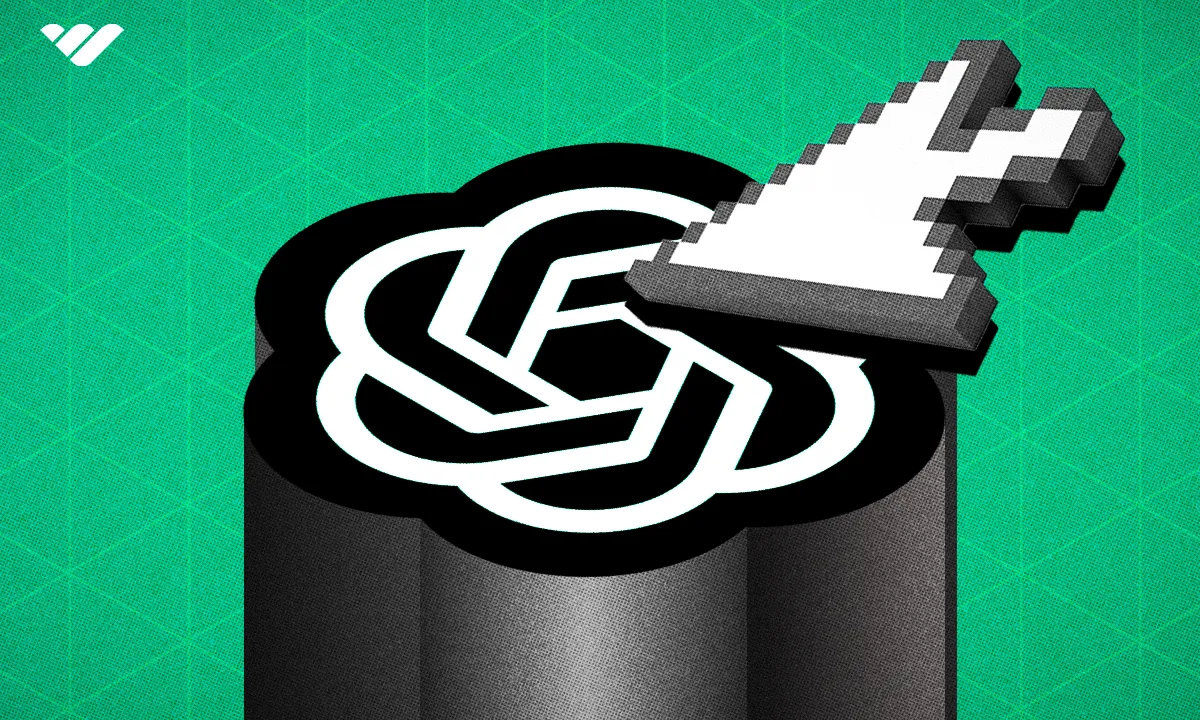
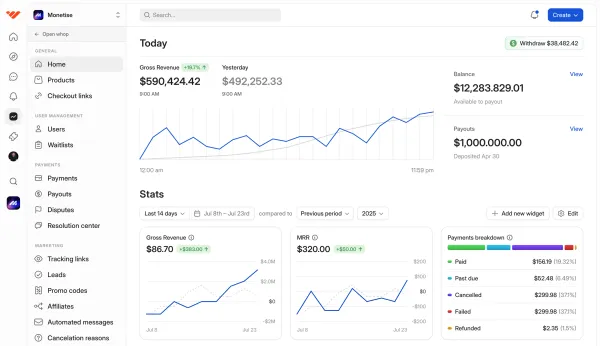
![Mighty Networks: is it the best choice for your community? [2026 review]](/blog/content/images/size/w1000/2024/05/What-is-Mighty-Networks-Features--Pricing--and-Alternatives-2024-Review.webp)

![The best online newsletter platforms [2026]](/blog/content/images/size/w1000/2024/05/Best-online-newsletter-platforms.webp)
![Top 17 best online course platforms to sell your course [2026]](/blog/content/images/size/w1000/2024/06/Best-Online-Course-Platforms.webp)
